Polonez MR’89 to model przejściowy między starym Polonezem a nowym Caro. Przejście między gospodarką demoludów a nową kapitalistyczną Polską. Jak większość wyrobów motoryzacyjnych regionu z tamtego okresu, nie miał szans w starciu z nową rzeczywistością.
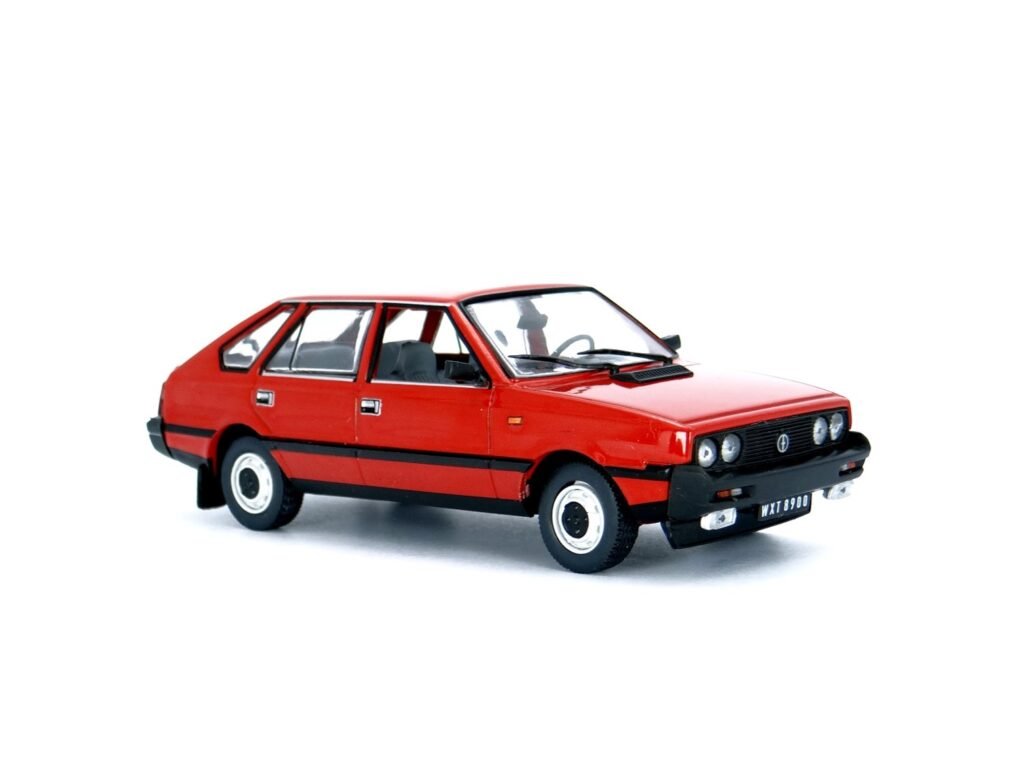
Polonez debiutował w 1978 r. jako następca licencyjnego Polskiego Fiata 125p (artykuł o pierwszym Polonezie możecie przeczytać tutaj). Dzięki nowoczesnemu nadwoziu zaprojektowanemu wspólnie z Centro Stile Fiat i nowoczesnym metodom produkcji, był dumą krajowego przemysłu. Najlepszym co mogliśmy zaoferować. Niestety, ze względów oszczędnościowych, modne nadwozie w stylu lat 70-tych skrywało przestarzałą technikę przejętą z Polskiego Fiata 125p. Umowa między polską stroną a Fiatem przewidywała dwuetapowy rozwój nowego samochodu. W pierwszym etapie planowano uruchomienie produkcji na podzespołach 125p. Dopiero drugi etap zakładał modernizację zawieszenia i montowanie nowoczesnych benzynowych silników DOHC Fiata. Wszystko brzmiało fajnie, lecz problem w tym, że do drugiego etapu nigdy nie doszło. FSO zmuszona była unowocześniać Poloneza we własnym zakresie.
“We własnym zakresie” było tożsame z ograniczonym budżetem i permanentnymi brakami. To oznaczało, że przeprowadzane zmiany, choć częste, były minimalne i niewspółmierne do faktycznych potrzeb. Kolejny etap tej powolnej ewolucji nastąpił wraz z Polonezem MR’89. Samochód zaprezentowano już w 1988 r., lecz do sprzedaży trafił w roku 1989. Największą różnicą w porównaniu do poprzednich modeli był zupełnie nowy tył, opracowany przez Antoniego Kasznickiego i Mirosława Kowalczuka. Tylną klapę całkowicie przeprojektowano i wydłużono aż do tylnego zderzaka. Pozwoliło to na obniżenie krawędzi załadunku z 95 cm do 66 cm, co znacznie ułatwiało załadunek bagażnika o pojemności ok.330l. Nowością były też tylne lampy zespolone. W środku zastosowano nowe materiały tapicerskie oraz zestaw głośników w przednich drzwiach – nowość w Polonezie.
Podstawowa gama silników była taka sama jak we wcześniejszych Polonezach. Ciekawostką była natomiast krótka seria modeli (ok.500-600 egzemplarzy) wyposażonych w fordowski silnik SOHC 1993 cm³ i mocy 105 KM. Takie Polonezy mogły rozpędzić się maksymalnie do ok. 170 km/h.

Wprowadzone zmiany, choć niewątpliwie potrzebne, nie usunęły największych wad Poloneza, czyli słabej jakości wykonania, kiepskiego prowadzenia i przestarzałej techniki. Polonez nawet na rodzimym rynku zaczął przegrywać z importowanymi, używanymi zachodnimi samochodami. Pomimo to, FSO eksportowała Poloneza na zachód, choć jak można się domyśleć, zainteresowanie i sprzedaż były znikome. Polonez MR’89 wytwarzany był jedynie przez ok. półtora roku – do momentu prezentacji ciut nowocześniejszego Poloneza Caro w 1991 r. Dzisiaj MR’89 jest jednym z najrzadszych seryjnie wytwarzanych Polonezów.
O miniaturze – FSO Polonez MR’89
FSO Poloneza MR’89 wydano już kilka lat temu w serii „Kultowe Auta PRL-u”, lecz miał wiele niedociągnięć. FSO Polonez MR’89 który ukazał się dzisiaj jako 67. część kolekcji „Legendy FSO”, pomimo iż wydaje się korzystać z tej samej formy, jest o niebo lepszy. Znacznie większa jest dbałość o detale. Mamy chromowane ramki wokół szyb, srebrny pasek na tylnym zderzaku, halogeny z głębią, kolorowe migacze oraz tylne światła. Poprawiono też wzór felg i pomalowano wnętrze na szaro. Tych rzeczy brakowało w KAPie a bardzo podnoszą prezencję modelu. Co ważne, w modeliku dobrze dobrano grubość opon i prześwit. Polonezy z Legend często miewały z tym problem, tutaj jest wszystko ok. Warto też wspomnieć o ładnym kolorze i czystej, równej powłoce farby.
Czy model ma jakieś wady? Ja zauważyłem jedną. Czcionka na tablicach pozostawia trochę do życzenia. Na szczęście to jest szczegół który można poprawić samemu. Ogólnie, modelik uważam za bardzo udany. FSO Polonez MR’89 z “Legend FSO” jest zdecydowanie wart kupienia. Obejrzyjcie i oceńcie go sami!
Jak zawsze zapraszam do śledzenia strony Facebooku i Instagramie!
*** ENGLISH ***
The Polonez MR’89 is a stepping stone model between the old Polonez and the new Caro that followed. A stepping stone between a socialist economy and a new capitalist Poland. Like most products of the regional automotive industry of the era, it stood no chance against the new reality.

The Polonez made its debut in 1978, as the replacement for the license-based Polski Fiat 125p (you can read about the original Polonez here). Thanks to its modern body designed in collaboration with Centro Stile Fiat and modern methods of manufacturing, it was the pride and joy of Polish industry. The best Poland could offer. Unfortunately, due to cost-cutting measures, the trendy 70s-style body hid outdated technology taken from the Polski Fiat 125p. The agreement between the Polish side and Fiat planned a two-stage development of the new car. The first stage saw start of the assembly using the 125p underpinnings. It wasn’t until the second stage, when a redesigned suspension and Fiat’s modern DOHC petrol engines would be introduced. Everything sounded great on paper, but the problem was that the second stage never came to be. The FSO was forced to update the Polonez on its own.
“On its own” was synonymous with a limited budget and constant shortages. This meant that any modifications made, although frequent, were minimal and did not fully address the actual needs. The next stage of this sluggish evolution occurred with the Polonez MR’89 (MR is short for Model Roku – Model Year in English). It was presented in 1988, but sales began in 1989. The biggest difference to previous models was a brand new rear-end developed by Antoni Kasznicki and Mirosław Kowalczuk. The boot lid was completely redesigned and lowered down to the rear bumper. This allowed the loading lip to be lowered from 95 cm to 66 cm, which made filling the 330l boot a lot easier. The rear lamp cluster was a novelty. Inside, new upholstery was used and a set of speakers was built into front door – another novelty for the Polonez.

The basic engine range was the same as previous Polonez models. Interestingly, there was a short series (ca.500-600 units), fitted with the SOHC 1993 cm³, 105hp Ford engine. Polonez with that engine could reach a top speed of 170 km/h.
The updates made, although undoubtedly needed, didn’t address the biggest flaws of the Polonez, which were poor build quality, ropey handling and outdated underpinnings. Even in its home market, the Polonez started to lose out to imported, used western cars. Despite that, the FSO exported the Polonez to Western markets, although as you can probably guess, the interest and sales were negligible. The Polonez MR’89 was manufactured for only about 18 months – until the introduction of the tiny bit more modern Polonez Caro in 1991. Today the MR’89 is one of the rarest, mass-produced Polonez models.
About the miniature – FSO Polonez MR’89
The FSO Polonez MR’89 was released a few years ago already in the “Kultowe Auta PRL-u” partwork series, but it had many flaws. The FSO Polonez MR’89 which came out today as part 67 of the “Legendy FSO” collection, although it seems to be using the exact same cast, is heaps better. The care for detail is a lot higher. We have a chrome-effect around windows, silver trim on the rear bumper, nice halogen lamps, coloured indicators and rear lights. The wheel design was also improved and they interior was painted grey. Those things were missing from the KAP model, but they improve the appearance greatly. What’s important, is that the tire thickness and ride height are correct. Previous Polonez models from Legendy FSO often had issues with that. Here, everything is ok. The nice colour and clean, even paintwork are also worth mentioning.
Does the model have any flaws? I only noticed one. The font on the license plates leaves a little bit to be desired. Thankfully, that’s a small thing that I can alter myself. All in all, I think this is a great model car. The FSO Polonez MR’89 from “Legendy FSO” is certainly worth buying. Go and check it out!
As always, also be sure to check out our Facebook and Instagram!
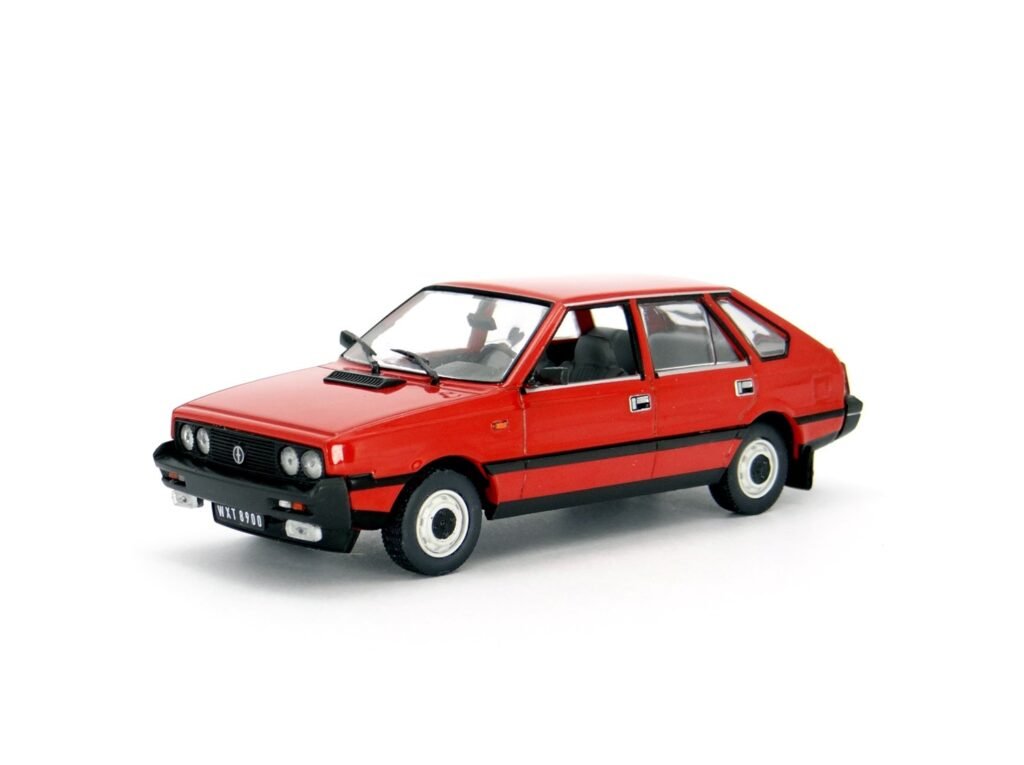





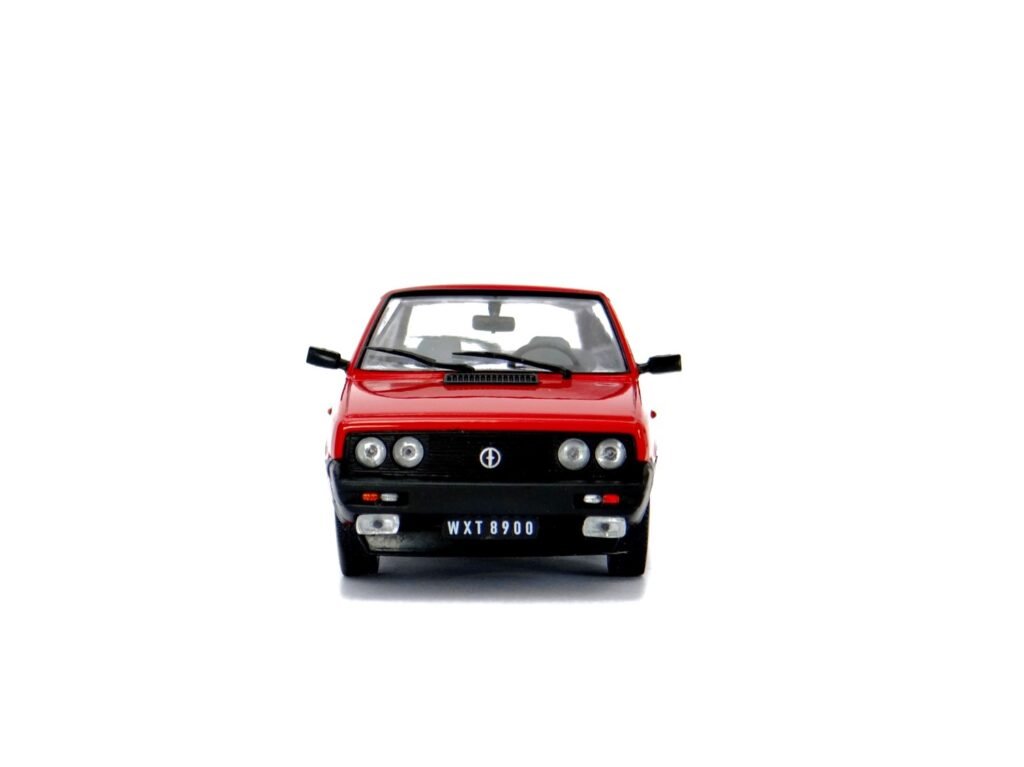
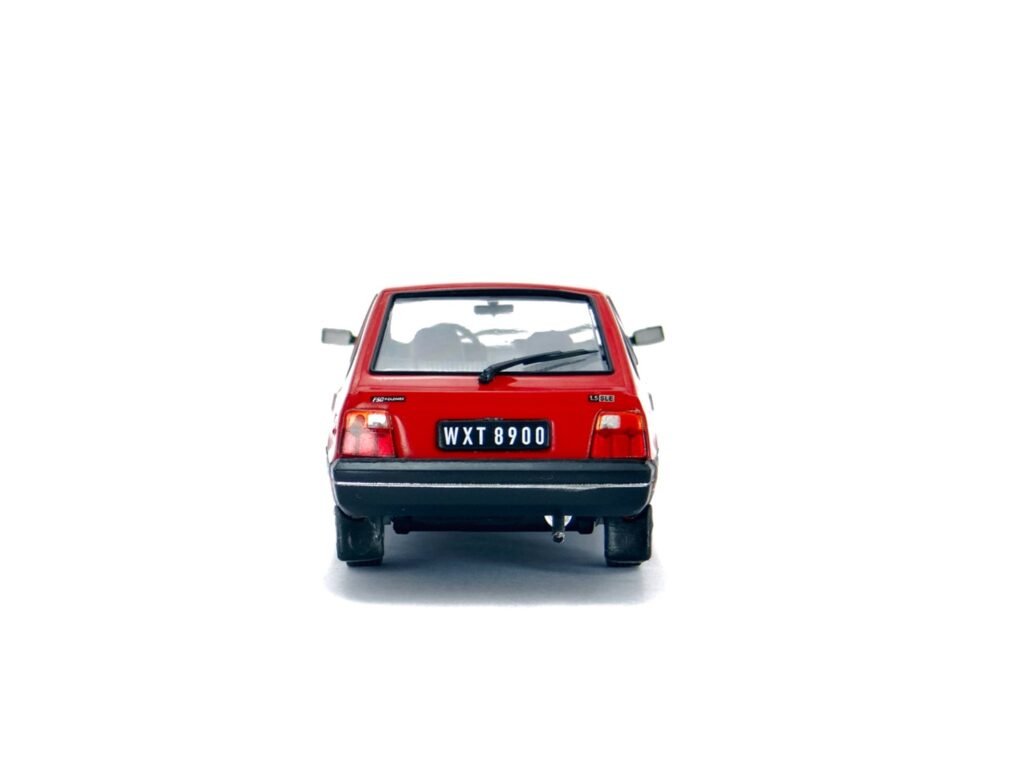
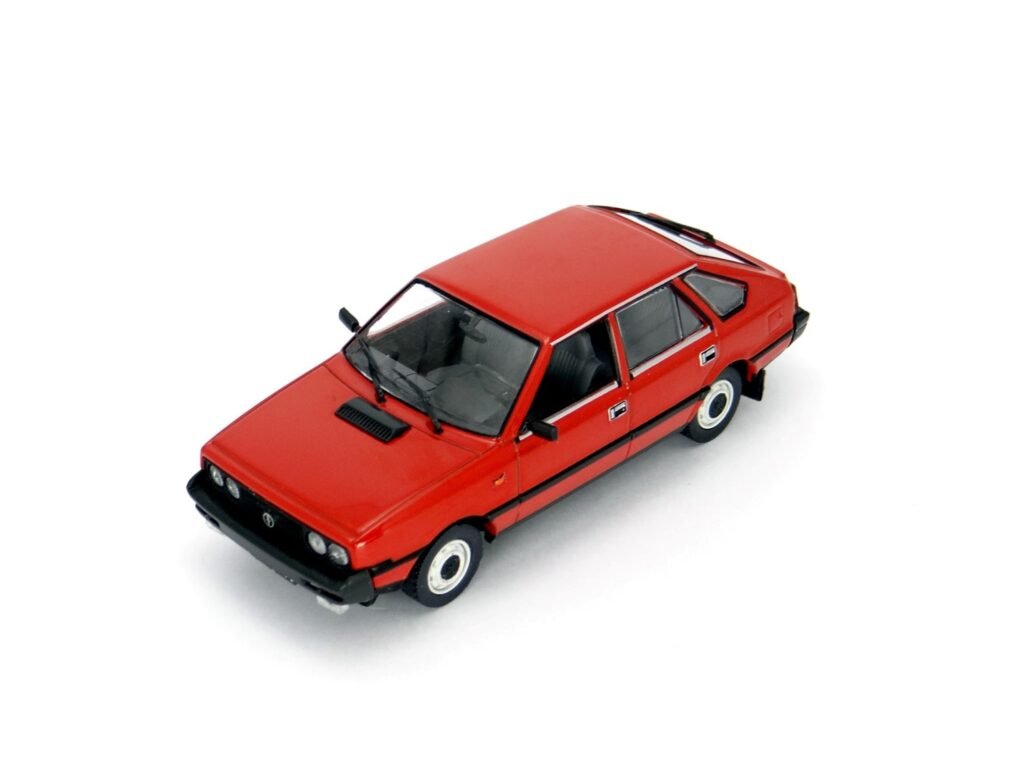




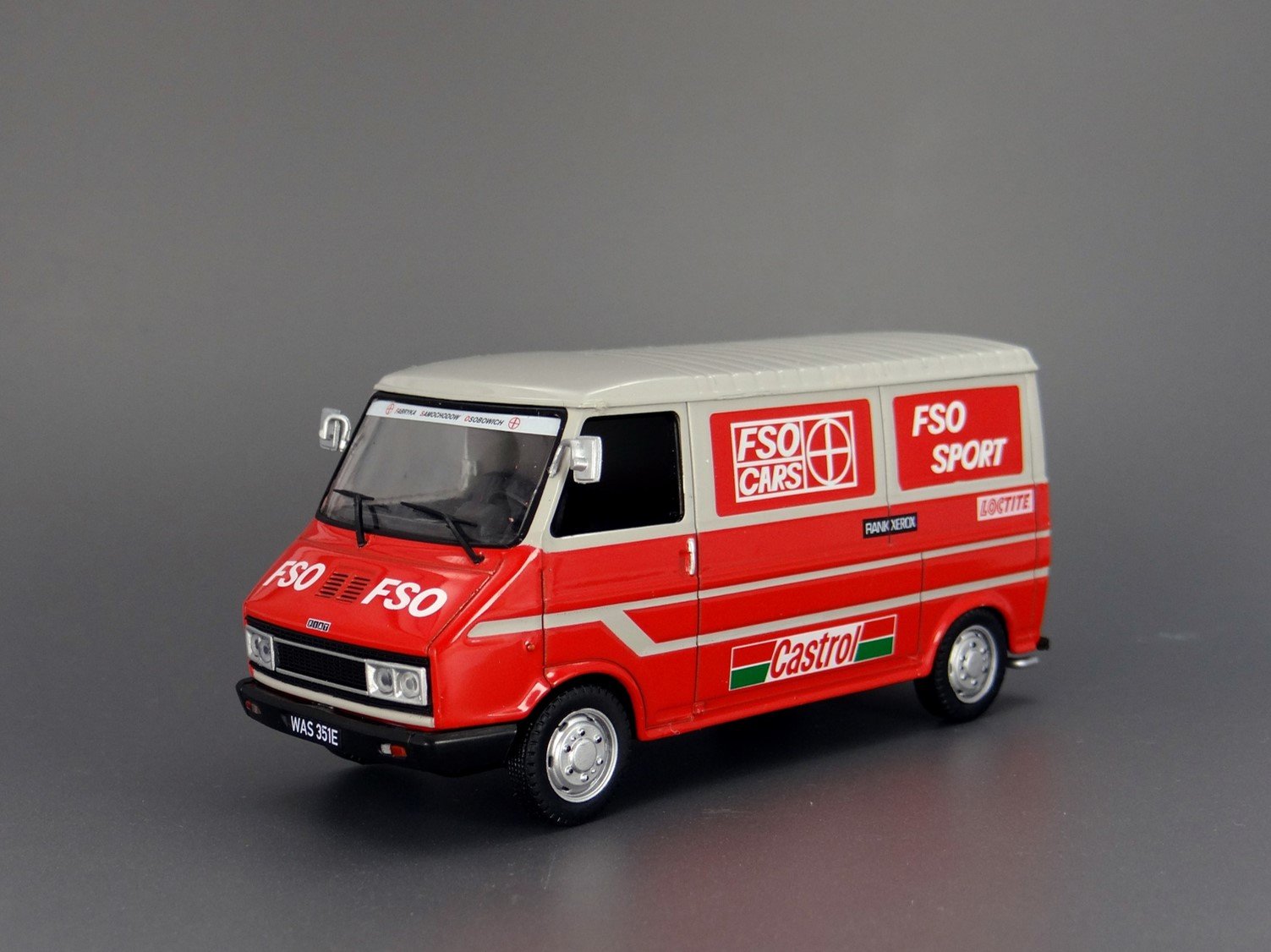



Bardzo ładny ten Polonez. Nie śledziłem tej serii zbytnio i niewiele z niej kupiłem. MR’89 mam z KaP, jestem z niego zadowolony i nie chciałem go dublować, ale ten model jest naprawdę świetny.
Tak, ten model jest świetny – o wiele lepiej wykonany niż ten z KAPu. Posiadam również ten KAPowy, ale nie miałem jeszcze okazji dokończyć jego waloryzacji. Pozdrawiam 🙂